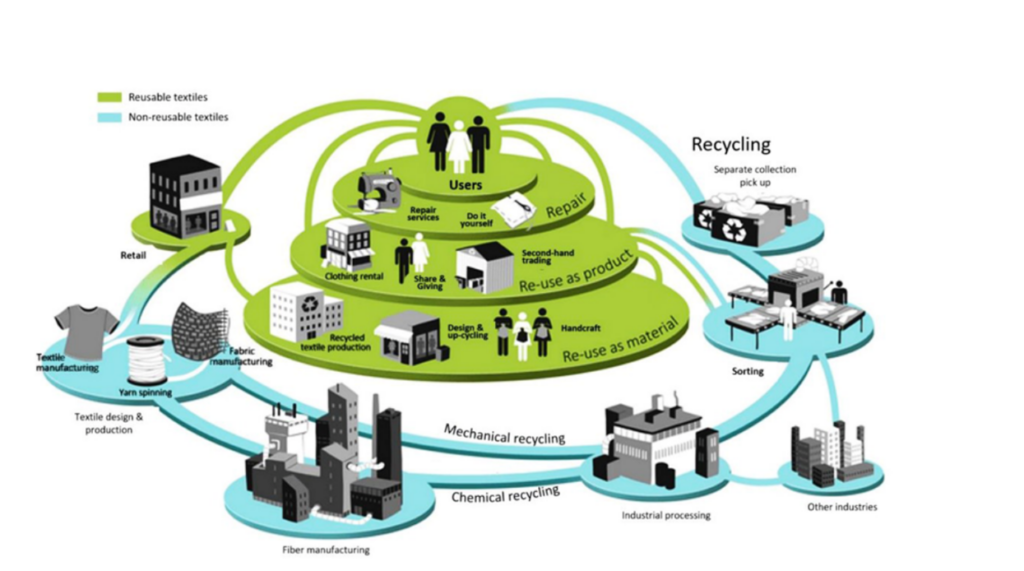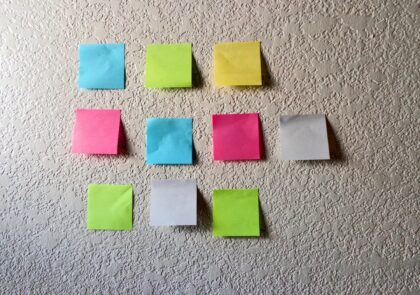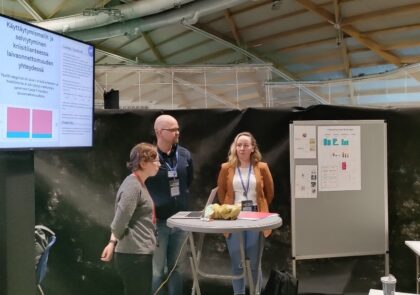
Fashion industry ranks as the 6th most polluting industry in the world and counts for 4% of global emissions. Fast fashion and trend-driven production and consumption bring challenges to the transition towards a sustainable and circular fashion world. Therefore, brands cannot achieve circularity goals alone! Achieving circularity goals requires collaborative efforts across different actors in the fashion ecosystem to extend the lifetime of clothing products and mitigate environmental impacts.
Author: Malahat Ghoreishi
Fast fashion has changed textile and clothes production and consumption over the past 15 years. While production has doubled, the use of clothes has decreased by almost one third. This trend underscores the industry’s high waste and emission production, emphasizing the need for a shift to a more sustainable and circular economy throughout the entire textile value chain. In addition, consumers play a crucial role in promoting circularity by purchasing fewer clothes and extending the lifespan of their garments. (Chatterji 2022.)
The environmental costs of fast fashion are significant. Every second, a truckload of textile waste is dumped in the landfill or incinerated. Plastic fibers and toxic dyes besides the wastewater are polluting the oceans. Fast fashion also affects enormously on society by exploiting underpaid labors. Circularity of textile value chain offers more options for circular business models in apparel industries to reduce waste and pollution while increasing more reuse and recycling options. (UNEP 2022.)
The Circularity Gap Report 2024 envisions a distinct version of the future of fashion, characterized by: “one where flimsy, trend-driven garments are replaced by durable, easy-to-mend and recyclable clothing, and businesses commonly offer affordable services like repair, rental and second-hand sales, with take-back schemes making it easy to give clothing items a second life”. In this future, consumers adopt attitudes centered around activities like swapping, sharing, and upcycling clothes, embracing a ”circular” lifestyle fostered by community-driven circular initiatives. (Circle Economy 2024.)
Circular Economy and Textile Business in Finland
The Finnish textiles and fashion industry considers circular economy in fashion industry not only as recycling, but a transformation from linear to circular production. Finnish Textile & Fashion define the circular production as an ecosystem of consumers, retails, logistics, services (e.g. repair and maintenance), refinement of waste, and reverse logistics (reuse, recycling and upcycling) of materials. The goal is to keep textile materials as long as possible and to maintain their value in circulation. For example, one solution which is aligned with the ambitions of EU Green Deal is to transmit waste into business opportunities which in turn can create new jobs. In this regard, the European Apparel and Textile Confederation (EURATEX) proposed the establishment of European Textile Recycling Hubs (ReHubs). For this, Finland aims to build ReHubs to start collecting textile waste separately. This way, Finland aims to collect and process textile waste streams in more efficient way and to offer regenerated fibers to all the operators in the textile ecosystem. (EURATEX 2019; Finnish Textile & Fashion 2022.)
Video 1. Outi Luukko CEO of Rester Ltd explains the opening of the first Nordic textile refining plant in Finland. (Suomen Tekstiili & Muoti ry 2021.)
Circular Ecosystem of Fashion in Finland
In their report “Model of circular business ecosystem for textiles”, Fontell and Heikkilä (2017) defined different actors, material flows and key processes for circular economy in the textiles industry for Finland. In addition, they identified that users (including consumers and professionals/organizational users) have a core role in closing the loops in circular textile ecosystems. As shown in figure 1, user choices, repair and re-use strategies will increase lifetime of clothes and textiles. Other important actors that play an important role in circular business ecosystem of textiles in Finland are repair services, clothes rental shops, second-hand clothes shops, online platforms for sharing clothes, upcycling centers, pick-up and collection centers, sorting centers, fiber manufacturing, textile design and production centers, and retail shops. As can be seen in the figure, the ecosystem actors are categorized based on reusable textiles and non-reusable textiles. (Fontell & Heikkilä 2017.)

Figure 1. Circular ecosystem model for textiles (Fontell & Heikkilä 2017)
In order to maximize the lifetime of the products in textiles and reduce the environmental impacts, the first step is to design textiles products in a way that last for longer time. Next step is to repair reusable textiles, either by consumers or other repair services offered by retailors or brands. Next cycle to extend the life, is to re-use as product through different sharing and giving, or clothing rental shops. The last cycle in which the life of textiles could be extended, is re-use as material by using the fabric in making handicraft or up-cycling and in case the quality is not good, products could be returned to recycled textile production centers. Finally, there is a need of collection and pick-up centers where users could deliver their discarded textile materials to prevent the post-consumer textiles ending in mixed wastes. Establishing a circular economy ecosystem for the textile and fashion industry has the potential to address textile waste refinement not only at the national level but also for other Nordic countries and the Baltic region. (Fontell & Heikkilä 2017.)
LAB University of Applied Sciences is actively involved in the circular textile projects. In this sense, it is worth to mention FINIX project, which is a national funded project by Academy of Finland. One of the core research areas of this project is exploring new forms of ecosystem governance that enhance circularity in textile industry. (LAB University of Applied Sciences, n.d.)
References
Chatterji, M. 2022. 5 ways the circular economy will transform your fashion habits. World Economy Forum. Cited 27 Feb 2024. Available at https://www.weforum.org/agenda/2022/01/5-ways-the-circular-economy-will-transform-your-fashion-habits/
Circle Economy. 2024. The Circularity Gap Report. Cited 27 Feb 2024. Available at https://www.circularity-gap.world/2024
EURATEX. 2019. REHUBS. Cited 27 Feb 2024. Available at https://euratex.eu/news/rehubs/
Finnish Textile & Fashion. 2022. Circular Economy in the Finnish Textile Business. Cited 27 Feb 2024. Available at https://www.stjm.fi/en/textile-innovations-design-excellence/circular-economy-in-the-finnish-textile-business/
LAB University of Applied Sciences. n.d. FINIX Sustainable textile systems: Co-creating resource-wise business for Finland in global textile networks. Cited 6 March 2024. Available at https://lab.fi/en/project/finix-sustainable-textile-system-co-creating-resource-wise-business-finland-global-textile
Fontell, P. & Heikkilä, P. 2017. Model of circular business ecosystem for textiles. Espoo: VTT Technical Research Centre of Finland. VTT Technology 313. Cited 27 Feb 2024. Available at https://cris.vtt.fi/en/publications/model-of-circular-business-ecosystem-for-textiles
Suomen Tekstiili & Muoti ry. 2021. Outi Luukko/Rester Ltd (English subtitles). YouTube-video. Cited 27 Feb 2024. Available at https://www.youtube.com/watch?v=Flje6lmnr0I
UNEP. 2022. The environmental costs of fast fashion. UN Environment Programme. Cited 27 Feb 2024. Available at https://www.unep.org/news-and-stories/story/environmental-costs-fast-fashion
Author
Malahat Ghoreishi is a senior lecturer at LAB University of Applied Sciences in sustainable solutions programme. She is also a researcher in digitalization and circular economy, focusing on the capabilities on AI for circular solutions and business models.
Illustration: https://www.pexels.com/photo/photo-of-woman-near-clothes-374677/ (Pexels License)
Published 7.3.2024
Reference to this article
Ghoreishi, M. 2024. Circular Textile and Fashion Economy in Finland. LAB Pro. Cited and the date of citation. Available at https://www.labopen.fi/lab-pro/circular-textile-and-fashion-economy-in-finland/






